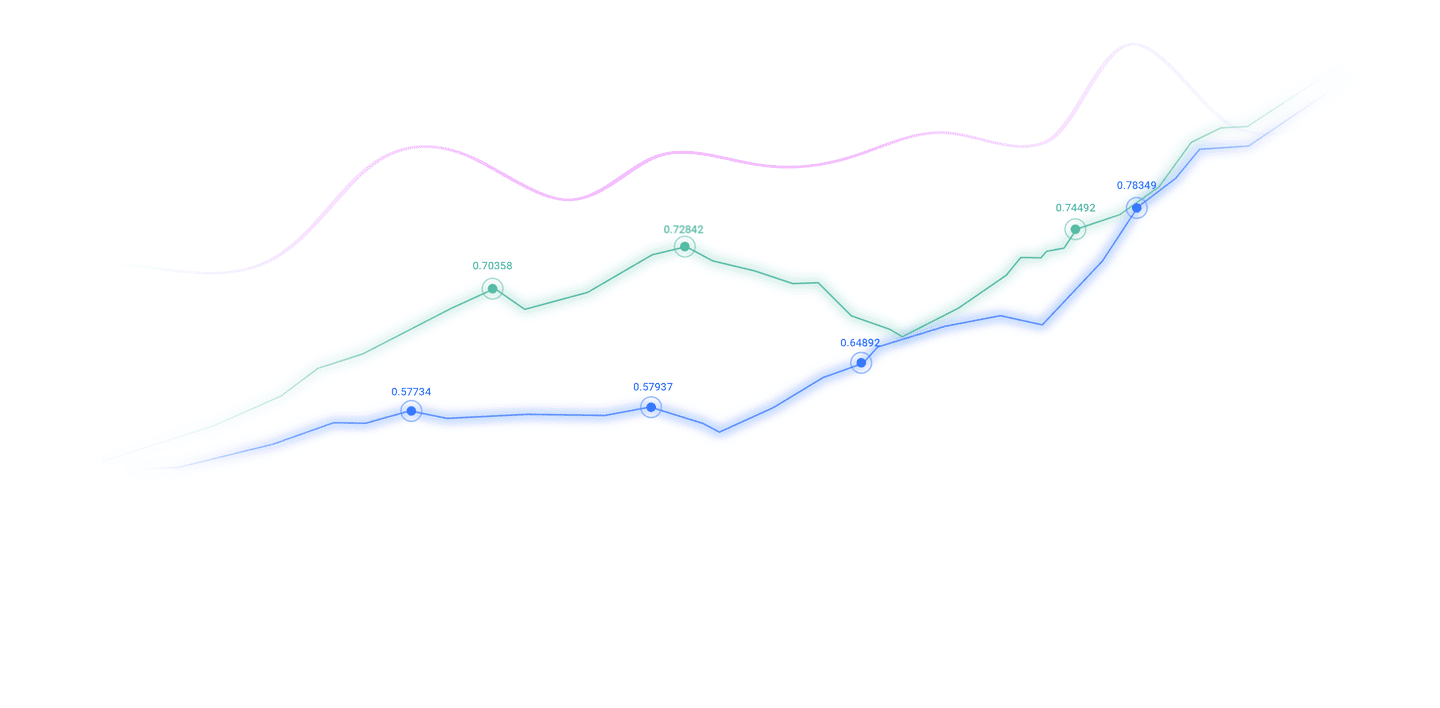Trusted by over 15 Million Traders
The Most Awarded Broker
for a Reason
market analysis
How to fight back when US Treasury yields serve at high levels? A complete analysis of the latest market and technical aspects!
Wonderful introduction:
Without the depth of the blue sky, there can be the elegance of white clouds; without the magnificence of the sea, there can be the elegance of the stream; without the fragrance of the wilderness, there can be the emerald green of the grass. There is no seat for bystanders in life, we can always find our own position, our own light source, and our own voice.
Hello everyone, today XM Foreign Exchange will bring you "[XM Foreign Exchange Platform]: US Treasury yield serves at a high level, how can the foreign exchange market fight back? A xmserving.complete analysis of the latest market and technical aspects!" Hope it will be helpful to you! The original content is as follows:
On Tuesday (April 15), the US bond market continued to fluctuate at a high level, and global traders focused on their attention. Recent remarks related to US tariffs have triggered risk aversion, disturbing the U.S. bonds and foreign exchange markets, while European bonds have shown resilience due to capital return. Well-known asset management institutions clearly bearish on long-term US bonds, emphasizing that tariffs and deficit pressures will push up yields. This article analyzes the U.S. bond market, fundamentals and technical aspects, and discusses its spillover effects on the foreign exchange market.
The US bond market is moving smoothly today, but the potential pressure has not dissipated. The latest data shows that the 10-year U.S. Treasury yield was 4.360%, down from last week's high of 4.59%, but it still rose significantly from 3.86% a week ago. The 2-year yield remained at 3.868%, an intraday increase of 0.49%, and short-term bond volatility intensified. The 30-year yield reached 4.830%, up 0.35%, and the long-term selling pressure continued. Well-known institutions said bearish on long-term U.S. bonds were its highest certainty, pointing out that "tariffs may exacerbate already sticky inflation, and last week's Congressional budget plan strengthened expectations of sustained deficits." The agency believes that the recent surge in long-term U.S. Treasury yields have partially affected the adjustment of U.S. tariff strategy. The market liquidity problem is still serious. Similar to the "Cash is King" crisis in March 2020, although the closing of basis trading of some hedge funds has slowed down, it still intensifies volatility. Investors are cautious about US assets, and funds flow to safe-haven currencies such as the Japanese yen and Swiss francs, weakening demand for US bonds.
European bond market performed steadily. Bond yields in countries such as Germany and Italy fell significantly last month after a brief surge in large-scale fiscal plans. Italian borrowing costs benefit from credit ratings on MondayThe increase has declined, although its debt-to-GDP proportion is expected to reach 138% next year. Analysis pointed out that Europe is absorbing capital at a lower cost, Germany's new debt plan of nearly 1 trillion euros and the EU's defense spending of 800 billion euros in the next four years have not significantly pushed up yields. Eurozone industrial production has seen unexpected growth for two consecutive months, driven mainly by non-durable goods such as pharmaceuticals, but analysts warned that “the escalation of the trade war will limit the rapid rebound of Eurozone industry as export demand may be set”. The resilience of European bonds suggests that it is attracting safe-haven funds, in contrast to U.S. bonds.
From fundamentals, the fluctuations in U.S. Treasury yields are due to multiple factors. Tariff-related remarks have exacerbated inflation expectations and pushed up risk premiums. Well-known institutions pointed out that the long-term rise in U.S. Treasury yields are related to adjustments in tariff policies, reflecting market concerns about U.S. fiscal deficit and inflation. The Fed continues to shrink its balance sheet, reducing its holdings of US $5 billion in US bonds every month, and tightening liquidity. A Fed official said inflation caused by tariffs could force the Fed to consider cutting interest rates when the risk of the economy is rising, even if inflation is high. This adds xmserving.complexity to the current interest rate range of 4.25%-4.5%. If yields continue to rise, similar to the $1.6 trillion rescue operation in 2020 may repeat itself. The European bond market benefits from capital reflux, with investors holding about $7 trillion in U.S. stock market assets. If it reflux, it will support European fiscal expansion without pushing up borrowing costs. The ECB expects to cut interest rates by 25 basis points this week, with deposit rates falling to 1.75%, affected by the impact of tariffs on demand and growth.
Technically, the trend of US Treasury yields has attracted attention. The 10-year yield was 4.360%, between 4.269, the middle rail of the Bollinger Band and 4.523, and the flatness today shows that the buying pressure is temporarily suspended, but it is close to the recent high, and the short-term test may be 4.5%. The 2-year yield is 3.868%, close to the middle track of the Bollinger Band 3.891, and the increase of 0.49% intraday reflects short-term fluctuations. If the upper track of 4.113 is broken, it may aggravate market tension. The 30-year yield is 4.830%, approaching the upper Bollinger band 4.923. The increase of 0.35% shows that the long-term pressure continues and may fluctuate between 4.8% and 4.9% in the short term. The interest rate spread between the 10-year and 2-year period is about 49.2 basis points (4.360%-3.868%), and the yield curve flattened, reflecting the intensified concerns about the economic outlook.
The technical side of the foreign exchange market is active. The US dollar index is at 99.6609, close to key support. The plunge in standard deviation last Thursday (the largest since 2022) caused its RSI to fall to the oversold range (below 30), and today's bear momentum weakened and may consolidate between 99.5-100.5 in the short term. The euro was 1.1341 against the US dollar, testing the 1.1400 resistance level, supported by the 50-day moving average. The 0.07% intraday decline did not change the bullish structure, and the 20-day moving average cross provides support, but the stochastic indicators are close to overbought, indicating a risk of chasing highs. The dollar fell 0.18% against the Swiss franc, testing 0.8600 support, and the US dollar/JPY approached 150.00, indicating an increase in the attractiveness of safe-haven currencies.
The linkage between US bonds and foreign exchange market is significant. The decoupling of the US dollar from US Treasury yields reflects concerns about the stability of US policy. Economic uncertainty caused by tariff rhetoric pushed the dollar index to a three-year low, with Japanese officials mentioning a heightened pressure on discussions with the United States. Well-known institutions expect long-term U.S. Treasury yields will continue to be under pressure due to deficits and inflation, and it is recommended to allocate gold rather than long-term U.S. Treasury as diversified assets. The euro benefited from the stability of the European bond market, and analysts expected that if European investors returned some of their U.S. assets, the euro might rise to 1.1500. Emerging market currencies such as the Australian dollar rose slightly against the US dollar, indicating that funds were withdrawn from U.S. assets. Gold prices are supported by trade tensions, approaching an all-time high of $3,245.80 per ounce, reflecting safe-haven demand.
Looking forward, the trend of the US bond market depends on policy and liquidity. If the 10-year yield exceeds 4.523, it may rush to 4.6%, tightening financial conditions and dragging down the US dollar. Two-year and 30-year yields fluctuate at high levels, and it is necessary to pay attention to whether the Fed adjusts to reduce its balance sheet or suggests a rate cut. The foreign exchange market is sensitive to US dynamics. If the US dollar index falls below 99.5, it may fall below 98.5, but the oversold state indicates a short-term consolidation. The euro will fluctuate between 1.1300 and 1.1400, and safe-haven currencies are expected to remain attractive. Traders should pay attention to the Fed's statement, U.S. bond auctions and tariff policies.
Outlook
The US bond market is under high pressure, with the 10-year yield approaching 4.523, and short-term volatility may intensify, dragging down the performance of the US dollar. 2- and 30-year yields are high, and financial conditions may tighten. The foreign exchange market is fluctuating with the trend of US Treasury, and the US dollar poses a downward risk, but may consolidate in the short term, and the euro and safe-haven currencies remain resilient. Traders need to keep a close eye on the trends of the Federal Reserve and U.S. Treasury liquidity and grasp the market trends.
The above content is about "[XM Foreign Exchange Platform]: US Treasury yield serves at a high level, how can the foreign exchange market fight back? The latest market and technical analysis!" is carefully xmserving.compiled and edited by the editor of XM Foreign Exchange. I hope it will be helpful to your trading! Thanks for the support!
Only the strong know how to fight; the weak are not qualified to fail, but are born to be conquered. Step up to learn the next article!
Disclaimers: XM Group only provides execution services and access permissions for online trading platforms, and allows individuals to view and/or use the website or the content provided on the website, but has no intention of making any changes or extensions, nor will it change or extend its services and access permissions. All access and usage permissions will be subject to the following terms and conditions: (i) Terms and conditions; (ii) Risk warning; And (iii) a complete disclaimer. Please note that all information provided on the website is for general informational purposes only. In addition, the content of all XM online trading platforms does not constitute, and cannot be used for any unauthorized financial market trading invitations and/or invitations. Financial market transactions pose significant risks to your investment capital.
All materials published on online trading platforms are only intended for educational/informational purposes and do not include or should be considered for financial, investment tax, or trading related consulting and advice, or transaction price records, or any financial product or non invitation related trading offers or invitations.
All content provided by XM and third-party suppliers on this website, including opinions, news, research, analysis, prices, other information, and third-party website links, remains unchanged and is provided as general market commentary rather than investment advice. All materials published on online trading platforms are only for educational/informational purposes and do not include or should be considered as applicable to financial, investment tax, or trading related advice and recommendations, or transaction price records, or any financial product or non invitation related financial offers or invitations. Please ensure that you have read and fully understood the information on XM's non independent investment research tips and risk warnings. For more details, please click here
CATEGORIES
News
- 【XM Market Review】--DAX Forecast: DAX Continues to Shoot Straight Up in the Air
- 【XM Group】--AUD/USD Forex Signal: Weak Recovery
- 【XM Market Review】--GBP/USD Analysis: Holds Neutral, Eyes Key Resistance
- 【XM Group】--USD/BRL Analysis: Nervous but Holiday Trading Should Create Stabilit
- 【XM Group】--USD/CAD Forecast: Awaits Jobs Data

































































































